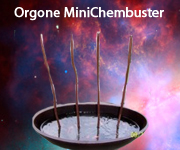No “cookbook answers” for Lyme treatment, whether acute or chronic
Recovery from Lyme
Dr. Daniel Kinderlehrer is a a Lyme-literate MD in Denver, Colorado. In the following excerpt from his forthcoming book, he outlines the main differences between acute and chronic Lyme disease.
I am frequently asked how I treat Lyme disease. My answer is that I don’t—I treat people, and they are all different.
There is no cookbook, even for treating early or acute Lyme disease. Ideally patients should avoid any practitioner who uses a “one size fits all” approach. Treating Lyme patients effectively is complicated. This chapter will explain why.
Issues with acute Lyme disease
Acute Lyme disease would seem to be straightforward. A recent infection should be easily diagnosed and treated. But it often isn’t. Here’s why:
Many people, perhaps most, do not observe a tick attachment.
A rash is often absent, missed, or ignored.
The early symptoms of acute Lyme disease may be absent or mild, or self-diagnosed as the flu, and therefore ignored by the patient.
The diagnosis of acute Lyme disease is often missed by medical practitioners.
The standard treatment recommended for acute Lyme disease is inadequate for eradicating the infection in many people.
Infection with the Lyme bacteria is frequently accompanied by co-infections that require different antibiotics as well as more aggressive treatment.
Some patients who present with acute Lyme are, unwittingly, suffering from chronic tick-borne infections that were acquired at some time in the past.
Borrelia burgdorferi (Bb) can suppress the immune system, resulting in persistent infection.
Although acute Lyme disease is characterized as being localized to the skin, Borrelia burgdorferi can spread systemically by the time the rash appears.
The previous chapter highlighted the several ways in which Bb has evolved to evade the immune system and resist antibiotics. In addition, not all Bb bacteria are the same; there are multiple strains of Bb, each with varying degrees of virulence and an affinity for different organs.
Chronic infection is more complicated
Chronic infection is a different ball game altogether. The majority of patients with chronic illness do not just have a long-term infestation with Bb. Rather, their Lyme disease complex* often includes other tick-borne infections, referred to as co-infections. Multiple studies have confirmed that ticks are veritable cesspools of microbes, and a single tick may harbor a handful of different bacteria.
For example, a collection of 286 ticks in upstate New York revealed that 64 percent had Bb, 20 percent had Anaplasma and 20 percent had Babesia; but 17 percent had Bb and Babesia, 16 percent had Bb and Anaplasma, and 5 percent had all three. One of the ticks had four pathogens: Bb, Babesia, Anaplasma, and B.miyamotoi. In fact, co-infection of ticks is the rule rather than the exception. Dr. Joseph Burrascano refers to these ticks as “nature’s dirty needles.”
The presence of combined infections typically causes more severe symptoms than Bb by itself. The immune suppression from Bb infection is compounded by co-infections, and polymicrobial infections are more difficult to treat.
Virtually all patients with Lyme disease complex are co-infected, and treatment of persistent infection with Bb will be unsuccessful unless therapy is also directed at these co-infections. Many additional complications have been associated with Lyme disease complex:
Chronic inflammation associated with chronic infection results in many imbalances throughout the body. These will be discussed in detail in subsequent chapters.
Detoxification pathways get overloaded and fail to metabolize and excrete toxins efficiently. (See Chapter 19.)
Adrenal glands, which work hard to compensate for the ongoing stress, lose their reserve and in time become overtaxed, resulting in adrenal insufficiency. This not only induces fatigue, but also contributes to immune dysfunction. (See Chapter 15.)
Hypothyroidism is common—even people with normal thyroid gland function can present with symptoms of hypothyroidism. They often are converting too much of their T4 hormone to reverse T3, a form that blocks thyroid action at the cellular level, rather than making the usable form of the hormone. (See Chapter 15.)
Insulin resistance leads to elevated insulin levels, resulting in increased inflammation, fatigue, and immune suppression. (See Chapter 15.)
The autonomic nervous system, which regulates the body’s automatic activities such as breathing, pulse, and body temperature, becomes destabilized. The resulting dysautonomia can cause chaotic manifestations: unstable blood pressure, both racing and slow pulse rates, difficulty breathing, heat and cold intolerance, anxiety, plus a host of other symptoms. (See Chapter 17.)
Immune imbalances may result in the development of food sensitivities, particularly to gluten. Some people also develop multiple chemical sensitivity syndrome (MCS). People with MCS react to low-dose exposures of chemicals such as perfumes, cleaning agents, and exhaust fumes, many of which are unavoidable in our current environment. (See Chapters 16 and 18.)
Immune dysregulation often results in autoimmunity, in which the immune system attacks its own cells.
Suppression of immune function from multiple tick-borne infections can lead to activation of microbes that were previously dormant. Many patients with Lyme disease complex experience reactivation of viral infections such as Epstein-Barr virus (EBV) and human herpes virus 6 (HHV6). (See Chapter 21.)
People with chronic tick-borne infections seem particularly susceptible to complications from mold. Mold exposure is normally associated with respiratory symptoms such as congestion, sinus problems, and asthma; but reactions can also be systemic, resulting in migraine headaches, fatigue, joint pains, cognitive dysfunction, and depression. In other words, mold exposure can cause the same symptoms as Lyme disease complex. Complicating issues further, those molds most commonly associated with indoor water damage also excrete poisonous mold toxins. The symptoms of mold toxin exposure overlap with those of chronic infection, often resulting in severe inflammation and hormonal dysfunction, particularly suppressing the pituitary gland. (See Chapter 19.)
Histamine reactions, either due to increased release of histamine into the circulation, decreased metabolism of circulating histamine, or heightened sensitivity to histamine, can add to inflammatory symptoms. This condition is referred to as mast cell activation syndrome (MCAS). (See Chapter 18.)
Bb has an affinity for the nervous system, resulting in an array of neurological issues. A common problem is cognitive dysfunction, or brain fog, which, among other things, compromises the patient’s capacity to make good therapeutic choices and follow through on treatment regimens. This issue is exacerbated by sleep disorders. (See Chapter 17.)
Bb and its co-infections, particularly Babesia and Bartonella, often cause neuropsychiatric disorders, particularly anxiety, depression, and irritability. Symptoms can be severe, resulting in panic attacks, suicidal ideation (and successful suicides), and rage episodes. It is important to realize that these problems are not only a secondary response to illness, they can be a direct result of infection causing neuroinflammation and neurotransmitter imbalance. (See Chapter 17.)
People have very different physiologies, and their constitutions differ considerably. Genetic differences can impact detoxification, allergic dispositions, and autoimmune reactivity. There are also differences in each person’s immune system, impacting their individual capacity to contain and eliminate infections.
By definition, people with Lyme disease complex have been sick for a long time. Many have been ill for years or decades before they receive a diagnosis, let alone find a practitioner willing to treat them. They often become weak and fragile, losing the rebound capacity of otherwise healthy people. As stated at the outset of this chapter, treating those with Lyme disease complex is complicated.
Risk factors of chronic disease
Prior or ongoing exposures to mold and mold toxins, heavy metals, and chemical volatile organic compounds (VOCs) vastly impact a person’s capacity to fight infection.
People also have enormously different tolerances to different antimicrobial agents, both herbal and pharmaceutical. Some patients have great difficulty taking any antimicrobials at all because they cannot tolerate the “die off,” also known as a Herxheimer reaction.
A history of emotional trauma can result in immune dysfunction and difficulty fighting infection. Social and emotional support structures have been shown to enhance emotional well-being and boost immune competence. Lack of support adds an extra hurdle to treatment. (See Chapters 1 and 2.)
Physicians are taught in medical school, “When a patient presents with multiple symptoms, search for the common denominator that explains everything.” This axiom applies well to acute illness: if a person has been healthy until two weeks ago and then develops fever, muscle aches, abdominal pain, nausea, and diarrhea, all these symptoms can be explained by a single pathogen.
Although Western medicine has done a good job of addressing acute illness, it has not been nearly as successful in addressing chronic disease. The “single-common-denominator” paradigm of illness no longer applies; there are usually multiple confounding issues. It takes detective work to uncover the assorted imbalances and restore people to good health.
Awareness of these tick-borne infections is critical; equally essential is recognition that every patient is unique. The seed is important, but understanding the soil is equally relevant. Lyme disease complex is complicated. It takes a persistent sleuth to help people get better.
Take home points
Everybody is different, and treatment needs to be individualized.
The diagnosis of acute Lyme disease is often missed for multiple reasons.
Co-infections and toxic exposures increase the severity and duration of illness.
Bb and co-infections may suppress immune function.
Most people with Lyme disease complex have co-infections.
Downstream issues of chronic infection complicate the clinical picture; endocrine, immunological, neurological, and gastrointestinal issues are common.
Emotional stress can make recovery more difficult while social support can promote healing.
Excerpted with permission from “Recovery from Lyme Disease: The Integrative Medicine Guide to Diagnosing and Treating Tick-Borne Illness” by Daniel A. Kinderlehrer, MD (Skyhorse Publishing), available for preorder now.
Click here to read another excerpt, recounting Dr. Kinderlehrer’s personal experience with tick-borne illness: “If the cure doesn’t work, it means you don’t have Lyme disease. (NOT!)“
More at this link: https://www.lymedisease.org/kinderlehrer-lyme-book-excerpt/
------------------------------------
Many Blessings,
CrystalRiver




































